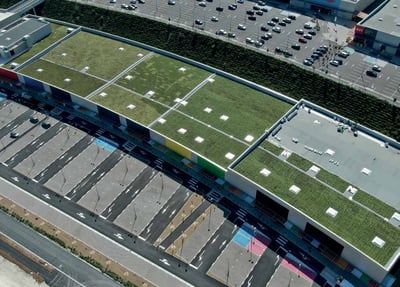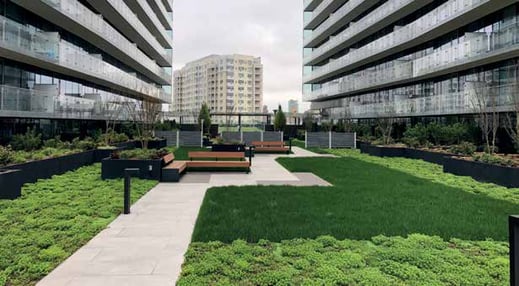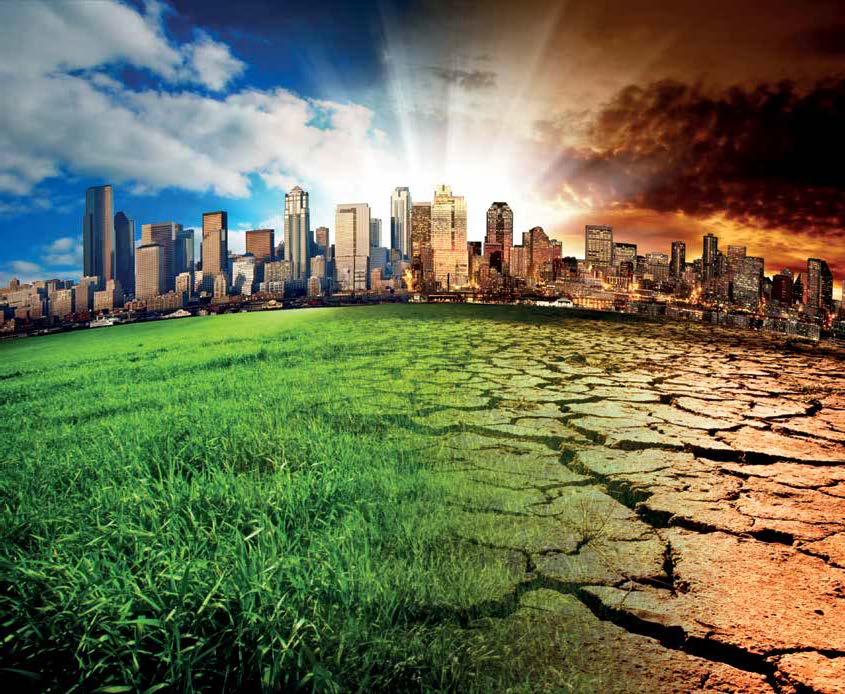Cities have been expanding at an ever faster rate and more than half of the world's population now lives in urban environments. The percentage is predicted to rise up to 70% by the year 2050. This calls for a massive redevelopment of the world's urban areas to accommodate the impact they have on the environment and the people who inhabit them. (1)
In this article, we explore the causes behind contemporary challenges of cities and how green infrastructure, implemented on a national and municipal level, can solve them.
What are the repercussions of ever growing cities?
Our cities are getting hotter, more crowded and noisier. One of the most pressing problems we have been facing lately are increasingly frequent heat waves – the consequence of global warming and faulty city planning. Besides the discomfort this has brought upon city inhabitants, it places great stress on human health, the productivity of workers and it also causes infrastructure problems, as explained by Tony Matthews and Jason Bryne from Griffith University. (2)
Urban heat waves affect different communities in various ways, also increasing death rates. Among the particularly affected groups are the poor, the elderly and small children. People who live in highly industrialised areas are also highly vulnerable. (1)
Why are cities getting hotter?
The main reason is population density. Cities aren't only growing in size, but also in numbers. To put it into perspective; in 1950, 746 million people lived in cities, by 2014, the number had risen to 3.9 billion and it continues to grow, with predictions of up to 6 billion people inhabiting urban areas by the year 2045. (1)
The increase in urban heat is a result of many factors. The building materials used in modern cities have thermal properties that contribute to overheating. There is also the issue of air emissions, caused by traffic and other forms of pollution. Building heating and cooling systems represent a major factor, and one of the reasons is also connected with the way we design cities, with narrow street canyons trapping heat, preventing it from cooling down at night. (1)
We also have to bear in mind the albedo effect. The negative correlation between the albedo effect and surface temperature means that the lower the albedo, the greater the surface temperature and vice-versa. To lower the surface temperature of buildings we should therefore use materials with a high albedo value.
For instance – roofs painted white have an albedo of about 0.8, but it is not easy to maintain them without regular washing. According to research, green roofs can reach an albedo of between 0,7 and 0,85, which is what makes them great at lowering roof surface temperatures. (3)
How green roofs can keep cities cool?
The benefits of green infrastructure encompass many areas connected to heat reduction in cities and can also act as a substitute habitat for small animals.
Hard surfaces, such as concrete and asphalt increase urban temperatures by absorbing heat and radiating it back into the environment. Green infrastructure, such as green roofs and walls on the other hand, have the ability to regulate air temperatures with its high albedo effect and through natural evapotranspiration.
Evapotranspiration is a process where plants release water vapour into the atmosphere as a result of normal plant breathing, effectively cooling the surrounding atmosphere. (2) Plants can also improve urban air quality by removing various pollutants from the air. (1)


Photo 3: Sky View Pac, NYC
Germany’s green roofs offer lesson on climate change adaptation
Germany has seen the benefits of applying green roofs for many years now. The first modern green roofs in 1960s were shortly followed by technological improvements and supportive policies by the local governments. (4)
Wolfgang Ansel, an expert in the field, explains that the German model is
mixture of federal and local laws, backed by supportive subsidies, and punitive higher taxes on run-off from conventional roofs. German federal law demands that each state produce a landscape plan, and federal nature conservation laws demand compensation for environmental damage in greenfield developments, which is generally done by installing green infrastructure.
Today, Germany has between 100 and 150 million square metres of green roofs, as estimated by the German Roof Gardens Association. (4)
How can urban planners use green infrastructure as a solution?
At Urbanscape®, we have developed systems for various different problems and uses;
- Urbanscape® Green Roof System - an innovative, lightweight and easy to install extensive green roof system.
- Urbanscape® Landscaping System – great for gardens, sports fields, commercial spaces, cemeteries, public parks and more.
- Green Designs on the Move™ - a design scheme which can be implemented on vehicles and can turn parts of highways and railways tracks into green surfaces.
- Urbanscape® Stabilization systems - designed to provide a strong and stable structural layer for the application of grass or gravel on paths, driveways and parking lots for cars or even heavy trucks and buses.
We are also keen on helping local communities develop mechanism to combat negative effects of global warming through green technologies and through education on the subject and its effective implementation to ensure the most efficient use of resources.
Visit our website to find out more about our green solutions:
https://www.urbanscape-architecture.com/solutions/
Blog written by: Ana Belčič, Studio Miao
Sources:
- (1): Green and cool roofs provide relief for hot cities, but should be sited carefully - - Ashish Sharma, Research Assistant Professor, University of Notre Dame, 2016
- (2): If planners understand it's cool to green cities, what's stopping them? Tony Mathews - Lecturer in Urban & Enviromental Planning, Griffith University, Jason Byrne - Associate Professor of Enviromental Planning, Griffith University, 2016
- (3) A comprehensive study of green roof performance from environmental perspective - Li W.C. Yeung K.K.A., Centre for Education in Environmental Sustainability and Department of Science and Environmental Studies, The Hong Kong Institute of Education, Hong Kong Special Administrative Region, 2014
- (4) Germany's green roofs offer lessons on climate change adaptation . Zhang Dongfang, China Dialogue, 2017




